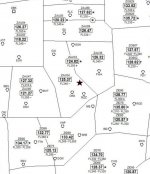Hey guys,
I am very new to monitoring air traffic. I’ve only ever dove into police/fire/ems and have a good grasp on the public safety scanning.
I particularly want to hear the Wabash Municpial Airport in Wabash Indiana, and air traffic that is flying in the airspace near me.
The Wabash airport uses a frequency of 122.8 csq and when the planes are actually at the Wabash Airport or close I hear them really well. The problem is, this channel picks up a LOT of other traffic that is usually unreadable and leads to a lot of annoying traffic. I have adjusted squelch which helped a little but was wondering if there were any other solutions.
Also, I heads a plane on a different frequency that mentioned they were flying over Wabash. It was a frequency assigned high altitude if I understood correctly.
so my questions are, what frequencies do I need to have to ensure I hear traffic in my area, and not distant areas, and is there a way to limit so I’m not getting static from 150-200 miles away being a csq tone?
Thanks!
I am very new to monitoring air traffic. I’ve only ever dove into police/fire/ems and have a good grasp on the public safety scanning.
I particularly want to hear the Wabash Municpial Airport in Wabash Indiana, and air traffic that is flying in the airspace near me.
The Wabash airport uses a frequency of 122.8 csq and when the planes are actually at the Wabash Airport or close I hear them really well. The problem is, this channel picks up a LOT of other traffic that is usually unreadable and leads to a lot of annoying traffic. I have adjusted squelch which helped a little but was wondering if there were any other solutions.
Also, I heads a plane on a different frequency that mentioned they were flying over Wabash. It was a frequency assigned high altitude if I understood correctly.
so my questions are, what frequencies do I need to have to ensure I hear traffic in my area, and not distant areas, and is there a way to limit so I’m not getting static from 150-200 miles away being a csq tone?
Thanks!


